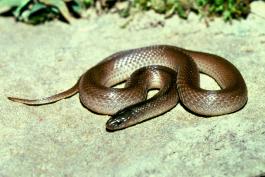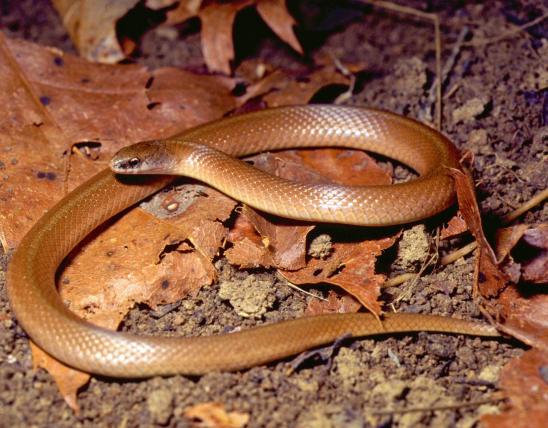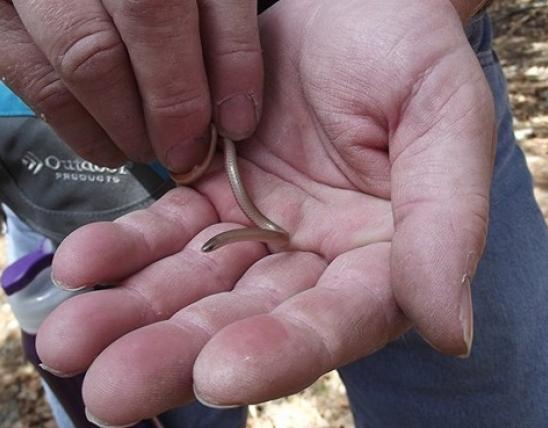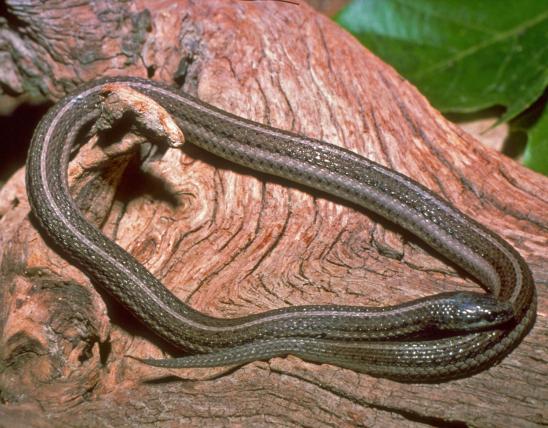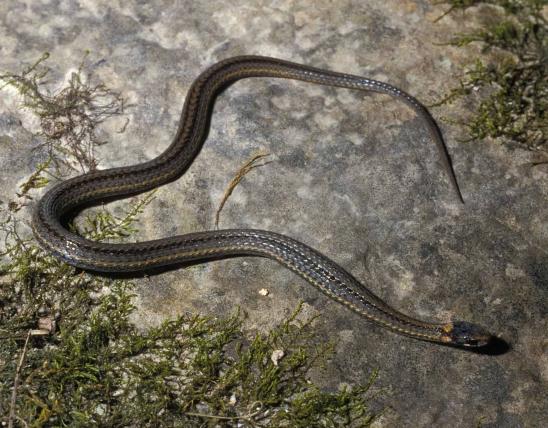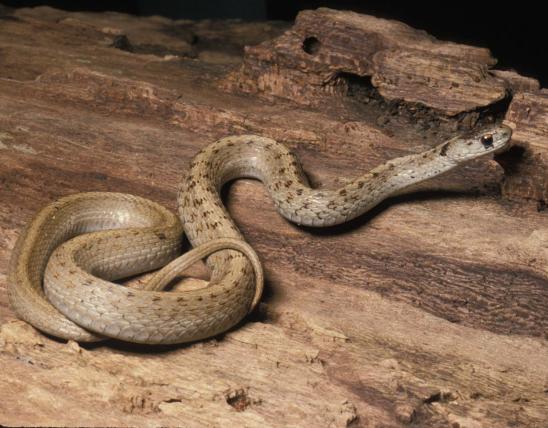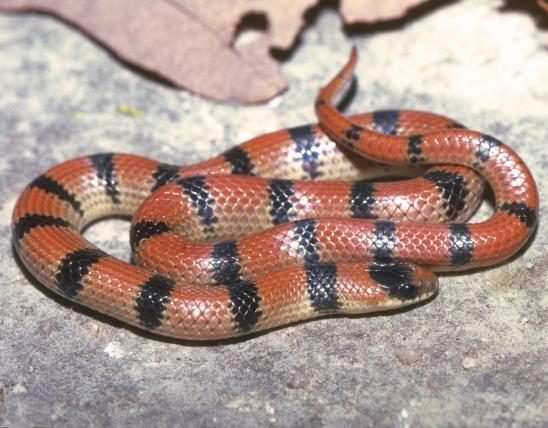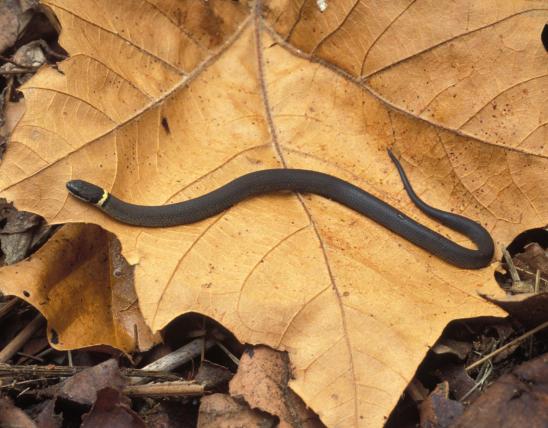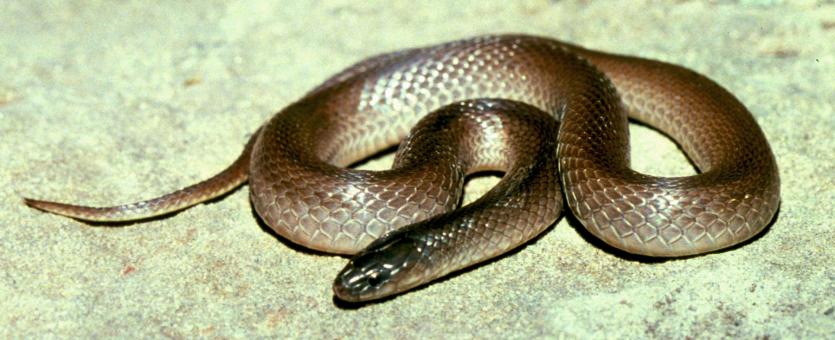
The rough earthsnake is a small, plain, secretive snake that is a uniform gray, brown, or reddish brown, with an unmarked, cream-colored or light gray belly. In Missouri, it only occurs in the Ozarks.
To verify your identification, and to distinguish it from the very similar western smooth earthsnake, look closely: the rough earthsnake has strongly keeled scales along the back (which makes it feel rough), 5 labial scales along the upper lip (counted along one side), a single scale between the nostrils, and only 1 scale (postocular scale) directly behind and touching the eye. The anal plate (the scale covering the anal opening) is usually divided, though sometimes it is single.
Similar species: The western smooth earthsnake (Virginia valeriae elegans), found nearly statewide, is closely related and extremely similar in appearance. It has relatively smooth (smooth or weakly keeled) scales along the back, 6 labial scales along the upper lip, 2 scales between the nostrils, and 2 postocular scales behind the eye. The anal plate is always divided.
Adult length: 7 to 10 inches; occasionally to nearly 13 inches.
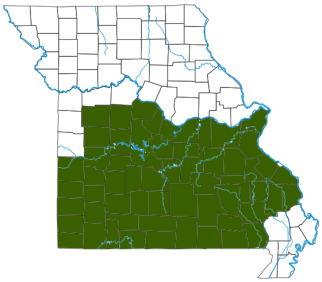
Throughout the Ozarks in the southern half of the state, excluding southeastern counties.
Habitat and Conservation
A highly secretive species of open, rocky woodlands and glades, active from late March into early November.
It prefers rocky hillsides and seldom ventures above ground, remaining hidden under logs and flat rocks or in leaf litter. During warm, damp weather, individuals may become active at night.
Rough earthsnakes are most abundant in rocky hillsides in open woodlands, along woodland margins, and in open areas with abundant ground cover such as rocks, logs, bark, stumps, or other debris.
In human-disturbed areas, this species may be found in trash dumps, roadside rock cuts, rock quarries, and abandoned buildings.
They overwinter in rotting stumps and logs and probably in small mammal burrows and rock crevices.
Food
Rough earthsnakes feed mainly on earthworms, but they occasionally eat slugs, snails, and insects.
Status
A harmless native Missouri snake.
In Missouri, it is generally more frequently encountered than the similar-looking smooth earthsnake, although the latter species can be quite abundant locally where habitat is suitable.
Taxonomy: this species was formerly placed with the smooth earthsnake in genus Virginia, but genetic data showed it should be placed in genus Haldea.
Life Cycle
This species is normally active late March into early November. Mating usually occurs in April through early June. Females give birth to live young from late July through September. Litters typically contain 2–13 young. Males become sexually mature by their second year of life, females by their third. One individual lived for over 7 years in captivity after having been captured wild; lifespans of 4 or 5 years are not unusual.
Human Connections
This small snake is not known to bite people. When captured, it releases a foul-smelling musk from glands at the base of the tail.
What is the value of a small snake that most people never see? Many believe that each species has its own intrinsic value, a worthiness that exists regardless of any human view. But economists have shown that nature, in a healthy, pristine condition, has tremendous value in hard dollars, too.
Ecosystem Connections
As predators, earthsnakes control populations of earthworms, snails, slugs, and insects.
Many larger animals, including other snakes, mammals, and predatory birds, will eat them when they can catch them. The danger of predation explains the earthsnake’s camouflage coloration, secretive habits, and defensive smearing of stinky musk on a captor.

